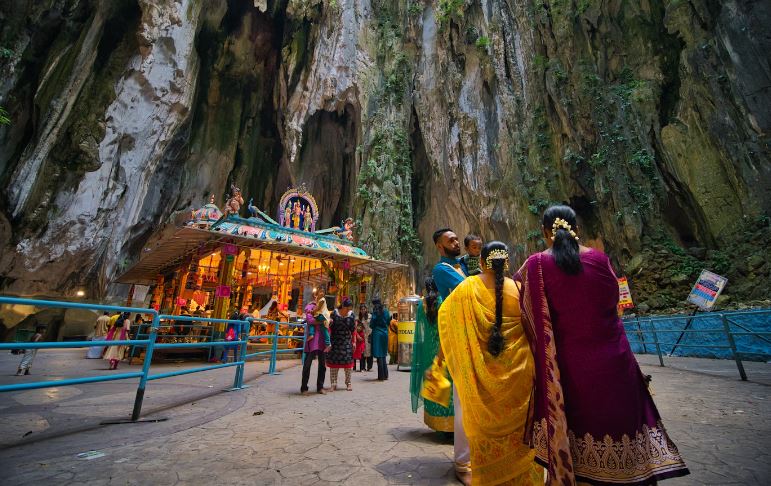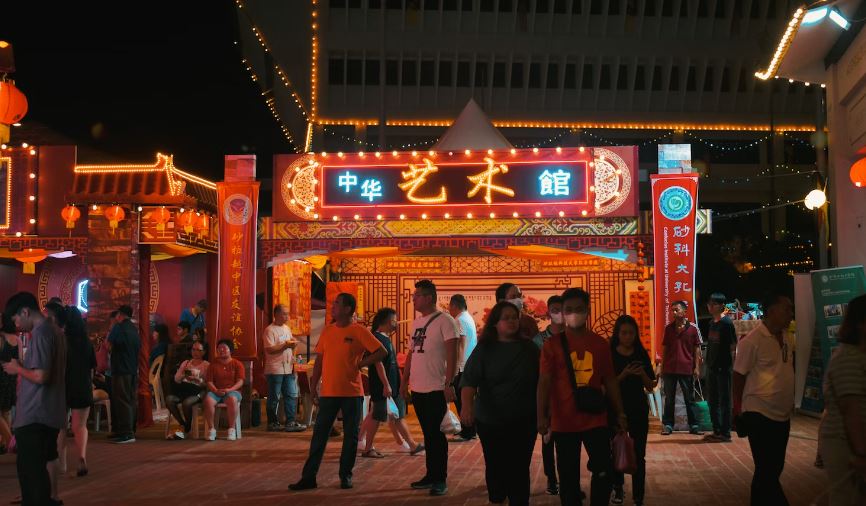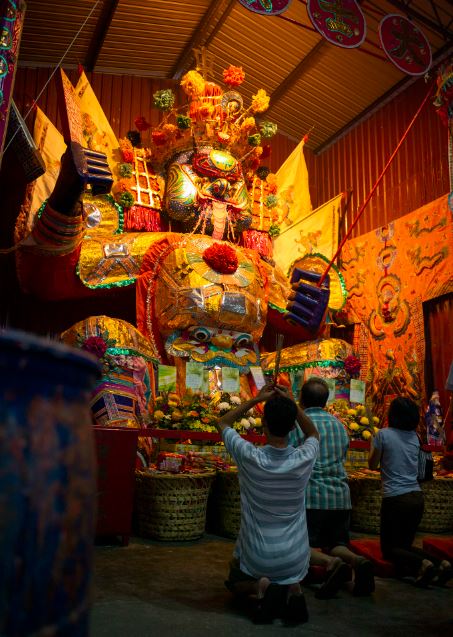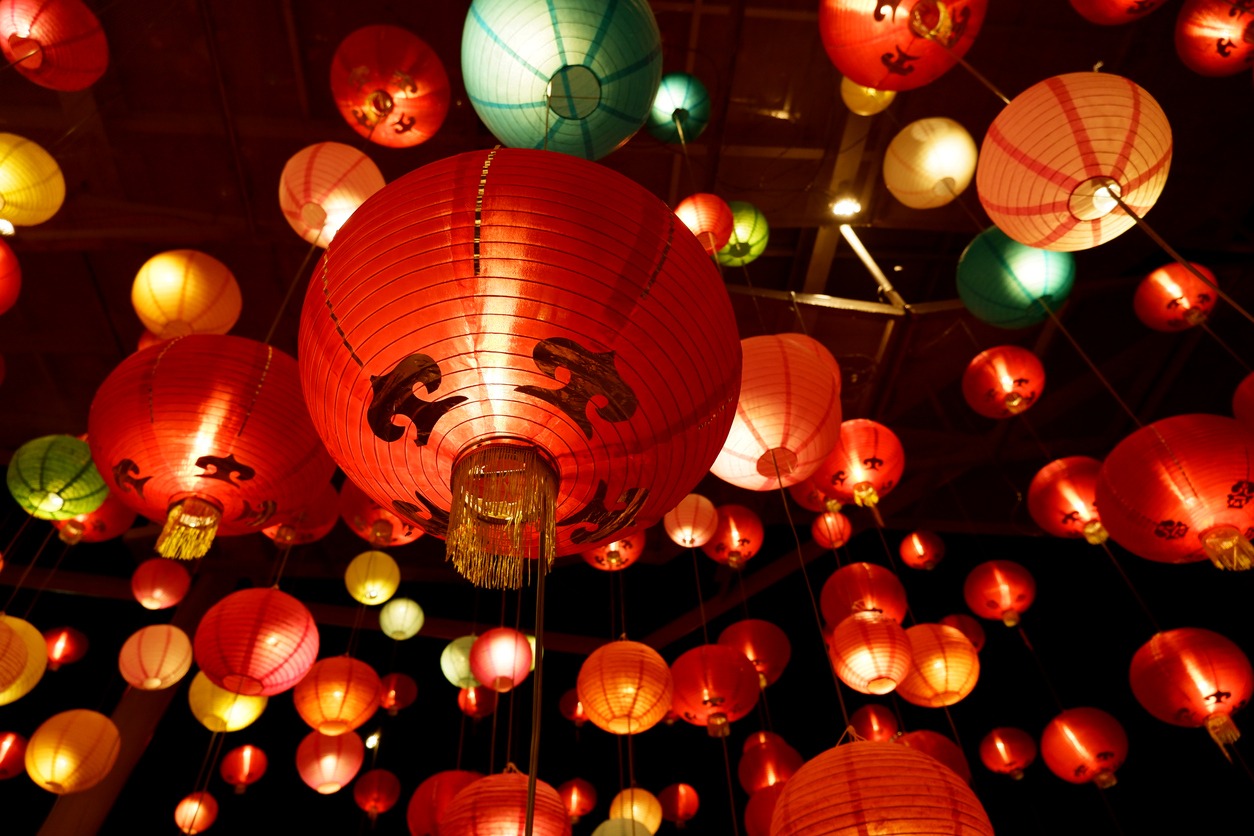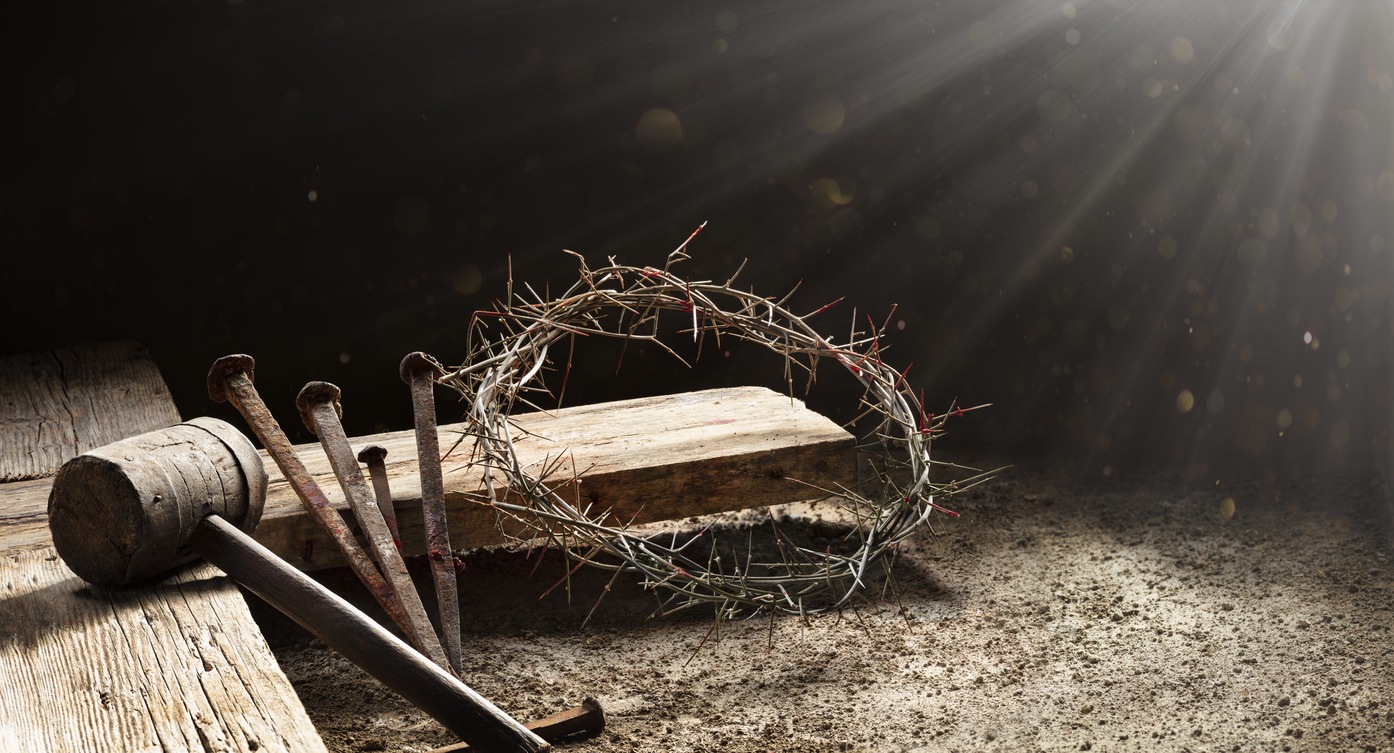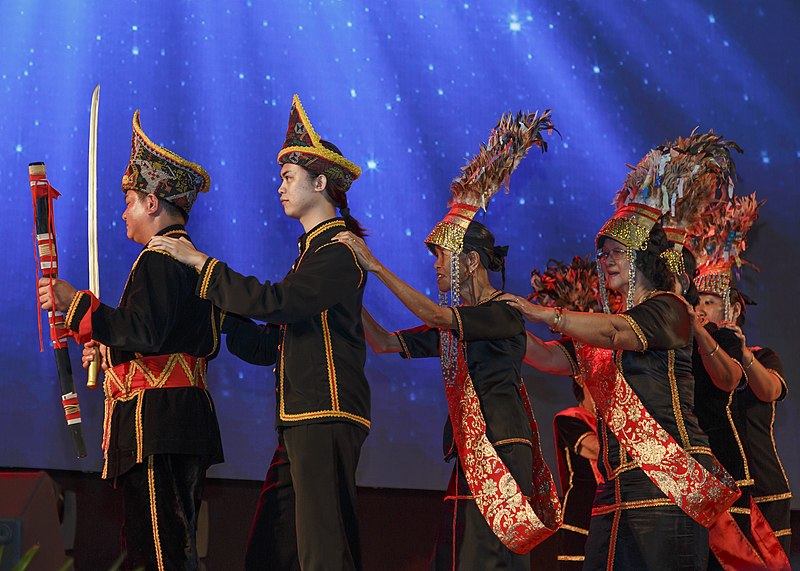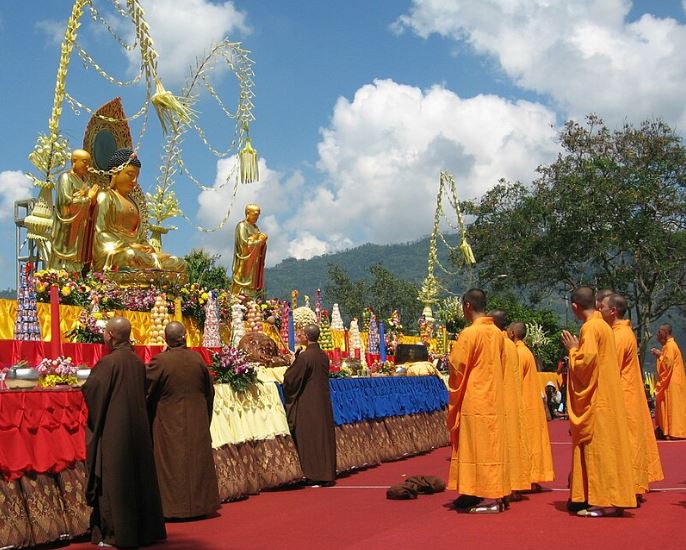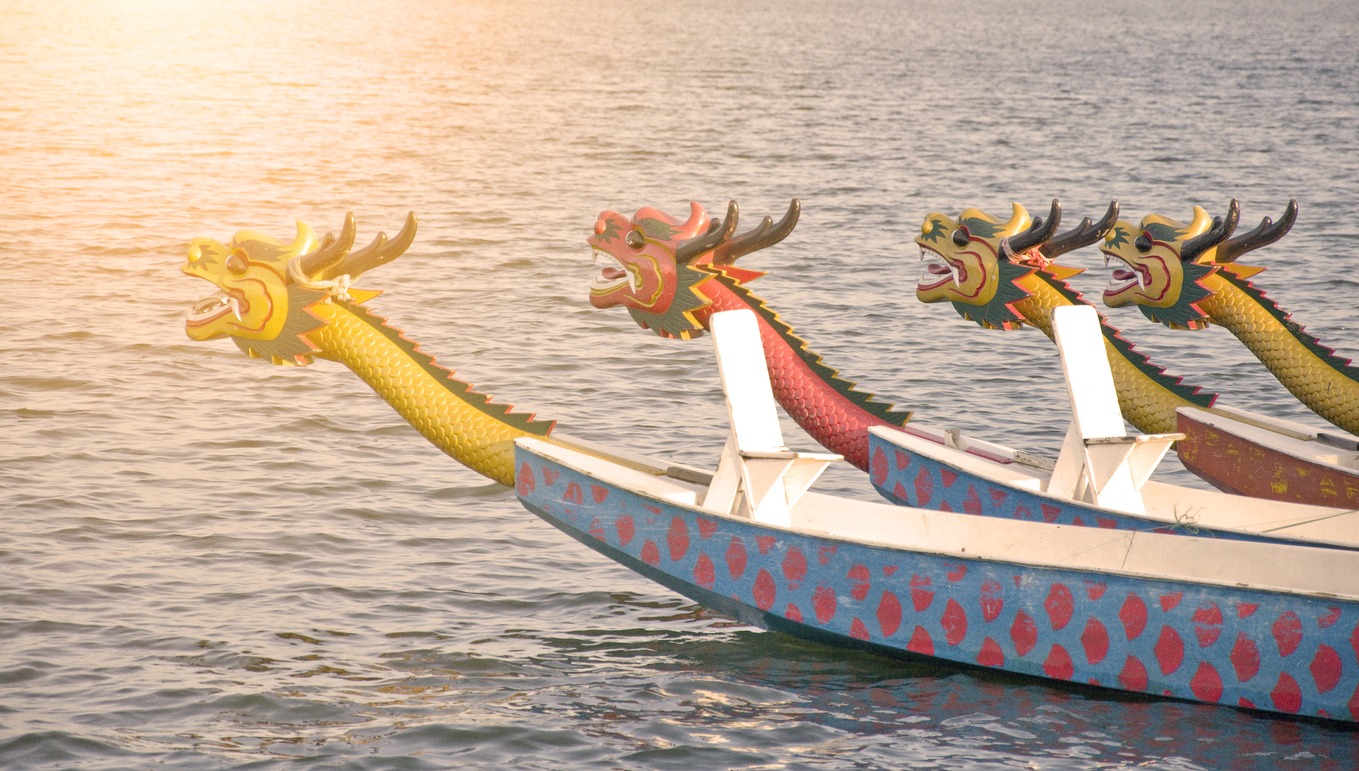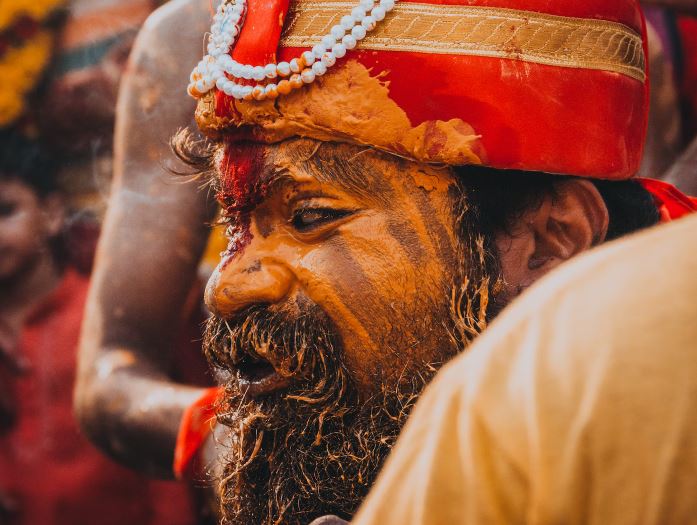Introduction
Visit Malaysia at one of its many festivals if you are searching for a cultural experience and want to participate in some of the local traditions while you are in the Southeast region of the world. In Malaysia, there is a plethora of festivals that may be classified as either cultural or religious celebrations. Malays, Indians, and Chinese, in addition to the indigenous groups, make up the population, and each of these groups, as well as the indigenous communities, have their customs, traditions, and festivities. The celebration of a festival frequently results in the declaration of a holiday, either at the state or the national level.
Because it has such a diversified cultural practice, Malaysia draws a large number of tourists from all over the world, as well as locals, who want to participate in one of the country’s many celebrations. Not only is Malaysia a country that plays host to a plethora of cultural events and festivals throughout the year, but perhaps more importantly, the country’s cuisine is consistently high-quality throughout the whole year.
Does Malaysia Host a Lot of Festivals Throughout the Year?
- The country is home to a diverse cultural and religious mosaic, with Muslims, Christians, Buddhists, Hindus, and Sikhs coexisting peacefully with hundreds of other ethnic and religious subgroups. As a consequence of this, each month is packed with a variety of events. West and East Malaysia frequently hold cultural activities that are distinct from one another. Some people choose to entertain guests at their homes by throwing open their doors and providing a buffet for relatives and close friends. Some entail going to a temple or mosque to say their prayers.
- Religious and cultural activities are distinguished from one another as distinct types of events. The religious festivals include Eid, the Chinese New Year, and Deepavali, all of which are similar to other events around the world, but with a Malaysian spin on them. For instance, the Western tradition of Christmas includes the consumption of turkey and the exchange of gifts. In general, Malaysians have a far greater attendance rate at churches, open houses with barbecues, and a relatively low rate of exchanging gifts with one another. To sum things up, Christmas here will be completely unlike anything else you’ve ever encountered.
- Those who live in Sabah and Sarawak have pagan beliefs and practices that date back centuries, such as their annual Harvest Festival celebration. Pagan beliefs were prevalent among indigenous peoples before the introduction of established religions. Today’s festivals are a way for ethnic groups to continue to uphold their traditions. And although the old rituals aren’t a daily part of life for them, they are still an important element of their culture.
Best Festivals in Malaysia
Chinese New Year
- The New Year of the Chinese calendar is widely regarded as the most significant holiday not only for Chinese people in Malaysia but also for Chinese people all over the world. The first day of the New Year according to the Chinese lunar calendar is marked by the beginning of these celebrations, which extend for a total of 15 days. According to the Chinese Zodiac, which has been around since ancient times, each year is named after one of the 12 animals listed below: rat, ox, tiger, rabbit, dragon, snake, horse, sheep, monkey, rooster, dog, and finally pig.
- In preparation for this momentous occasion, family members will tidy up the house and adorn it with thoughtful touches. It is forbidden to sweep or clean in China because people of that culture have the superstition that doing so could cause them to lose any good fortune they may have acquired. To avoid inviting in needless misfortune, offerings, and prayers are said, and debts are paid off.
Thaipusam
- In the western regions of Malaysia, particularly in and around the capital city of Kuala Lumpur, there is a sizeable population of Tamil people. One of the most significant gatherings that the Tamils hold takes place either at the end of January or the beginning of February when the moon is in its full phase. The celebration known as Thaipusam is held to remember when Murugan triumphed over an evil spirit known as Soorapadman. Devotees will pierce various areas of their bodies, including their cheeks and tongues, during the course of this festival.
- Some carry a Kavadi. A Kavadi is an ornamental item that devotees insert into their bodies to puncture their skin. Because Thaipusam is so peculiar, and the Tamil community celebrates it in a somewhat one-of-a-kind way, it is highly improbable that you will ever have the opportunity to participate in it again. Batu Caves, located on the outskirts of Kuala Lumpur, is host to the yearly celebration of Thaipusam in Malaysia. Batu Caves has a Hindu temple inside a cave. To reach the temple, visitors will need to climb a total of 272 stairs.
Good Friday
- On the Christian calendar, the most significant religious holiday is known as “Good Friday,” which is also known as “Holy Friday.” Other names for this day include “Christ the King Friday.” This significant celebration is held on the Saturday before Easter Sunday every year. The date of Good Friday shifts between the 20th of March and the 23rd of April each year. Because it commemorates the day that Jesus Christ was put to death, Christians observe the day as a day of mourning.
- Why is it being referred to as good when there has been nothing nice that has happened during that day? This is because, by your dictionary, good is synonymous with the terms “holy” and “pious.” Good Friday is also known as “Silent Friday” or “Mourning Friday” in German, which is one of many languages around the world. Some people even suggest that it refers to the defilement of God in its meaning.
- According to the teachings of the Christian religion, what makes Good Friday such an important day? Not only does it signify the end of Jesus Christ’s anguish and sorrow when he was hanging on the cross, but it also conveys the notion that “an eye for an eye” is appropriate. Hatred is not the answer to a problem like violence since it will just make the problem worse. Love is the only force capable of defeating it, as well as nonviolence and goodwill toward those who use violence. According to the teachings of Christians, Jesus came to this world to save people from the consequences of their misdeeds, but he ended up being put to death by his fellow humans out of hatred for him. As a result, the Friday before Easter is commemorated annually with acts of grief and sadness. For Christians, it is a feast associated with grief and loss.
- The most important day in the Christian calendar is observed by Christians around the world by praying, abstaining from food, and meditating on the anguish and agony that Jesus experienced while hanging on the cross. Additionally, Christians in every region of the world adhere to a wide variety of local customs and practices. On this specific day, there will be no bell ringing at all. Even though Islam is the predominant religion in Malaysia, adherents of other faiths have complete freedom to celebrate their religious holidays and events as they see fit. Good Friday is recognized as a public holiday in the Malaysian states of Sabah and Sarawak, as well as in western Malaysia.
The Malaysia Water Festival
- The Water Festival is celebrated not only in Malaysia but also in other nations all over the world, such as Cambodia and Thailand. The Songkran event is a water event that is extensively held in Thailand. The name of the festival comes from the word Songkran, which means “shift” or “movement.” The people of Thailand celebrate this event as the sun moves from the sign of Pisces into the sign of Aries in the Zodiac, which also happens to coincide with the beginning of a new year.
- During the traditional celebration of Songkran, which is also known as the Festival of Water, fragrant water was poured over monks as a means of purification. The water will then be collected by the people, who will bless one another by pouring it over their heads.
- The Songkran Festival is becoming increasingly well-known across all of Southeast Asia, particularly in Malaysia. These days, the fun of splashing is embraced even when there is no intention of bestowing a blessing. The good news is that it is now also being done in Malaysia, so you may not have to take an expensive flight to Thailand to experience it.
- The natives of Malaysia hold the Water Festival every year because they believe that the ritual of splashing water will bring them good luck and protect them from bad fortune or luck. The Malaysia Water Festival demonstrates and encourages a love of natural environments, particularly those involving water and its components. The Water Festival is celebrated in many different states, including Penang, Selangor, Langkawi, and Labuan, amongst others. Activities can range from those involving water sports to those involving music and cultural performances, those involving the beach and the sea.
- Due to the chaotic nature of the Water Festival, it is impossible to escape being doused in water and becoming soaked while attending. When you go to the Water celebration in Malaysia, make sure to bring some extra clothes with you, especially during the celebration itself. You might want to carry an additional bottle of clean water with you just in case, especially if you have sensitive skin because some regions can become so wild that people even mix edible powders like flour with the water there. Rinse the compound off of your skin with clean water before it has a chance to stick. The Water Festival in Malaysia is a multi-day event that often takes place in the middle of April. The festival can span anywhere from two to three days.
The Caklempong Xtravaganza
- Since 2014, the Caklempong Xtravaganza has been held in the state of Negeri Sembilan. The people who live in Minangkabau, Indonesia, are the ones who celebrate this one-of-a-kind traditional celebration. This one-of-a-kind cultural practice was brought to Malaysia in the 14th century by people from the Minangkabau region who settled in the state of Negeri Sembilan. This traditional cultural performance in Malaysia has developed into an indigenous art form in the modern day.
- The playing of these traditional musical instruments is almost identical to those of Western instruments that are well known, such as the piano and the guitar; Caklempong, like these Western instruments, contains notes and symbols. Why is it considered to be so unique, and why do the majority of Malaysians enjoy it? The waves of sound that are produced while these instruments are being played have a texture that is harmonic throughout the notes, which helps to soothe the inner heart and the brain.
- In Malaysian culture, the activity of Caklempong is traditionally used not only for ceremonies and other official events but also for religious celebrations and as music for dances. Caklempong is also used in this capacity. This historic practice is then updated for contemporary occasions in Malaysia, such as during ceremonies, elections of government officials, and also other formal ceremonies organized by the authorities in Malaysia.
- The music of the Caklempong nowadays comprises both the traditional style and more contemporary styles in addition to the traditional style. Because of its one-of-a-kind tune and distinctive musical style, this is an absolute must-hear for those like you who are into music.
The Pesta Kaamatan
- Have you ever attended Thanksgiving? Pesta Kaamatan is a Thanksgiving ceremony that takes place once a year among the Sabahan people of Malaysia. According to the natives of the area, Pesta Kaamatan can also be referred to as Harvest Festival. This event begins on the first day of May and continues through the entire month of May. The ethnic Kadazan-Dusuns, which are one of the communities that make up Malaysia, are the ones that traditionally commemorate this holiday.
- Pesta Kaamatan, also known as the Tadau Ka’amatan, is a festival that takes place in Sabah. To add to the carnival-like atmosphere, the locals of Sabah will participate in the festival while dressed in their customary garb. Even though many young Sabahan people have been incorporated into urban occupations in towns and cities, they continue to travel back to their longhouses and villages to take part in the annual celebration of their traditional agricultural communities.
- The beliefs of the Kadazandusun people are the source of Pesta Kaamatan. According to their beliefs, the spirit that is generally known as Bambaazon, which is worshipped as the main creator as well as the source of life and existence, includes the paddy plant as a component of its being. This particular cultural group regards the paddy plant not only as a means of existence but also as a sacred plant. They have the belief that if rice fails to exist, there is no life.
- It’s possible that the initial phase, in which Bobohizan or High Priests invite Bambaazon for a homecoming, is the most significant part of the ceremony. This is done to guarantee that farmers will have plentiful harvests during the following planting season. In addition, there is also a ceremony known as the Magavau. Bobohizan will hunt for the spirit of Bambaazon that has been misplaced, kidnapped, or led astray for any number of reasons, including pests, predators, or natural calamities like droughts and floods. On the field, a lengthy prayer will be performed to summon the Bambaazon spirit in the hopes of convincing and directing it to return to the rice barns.
- This competition will invite the ladies in the community who are considered to have the most beauty, with the end goal being to crown a Kaamatan Queen. This is not your typical beauty contest because it is an important aspect of the myth or folklore that describes how Kadazandusun came to be. In addition to this, there will be traditional cultural rituals and traditional sports activities, such as buffalo races, knuckle and finger fighting, blowpipe competitions, and traditional dances.
The Kelantan Kite Festival
- Kelantan has been overlooked for decades, and as a result, it is possible that it is not a popular destination among tourists in Malaysia. It’s possible that this state won’t have any metropolitan settings like Penang, Melaka, or Kuala Lumpur, but that doesn’t mean it won’t have any urban feelings. However, Kelantan may be the only state in Malaysia that conceals all of the country’s cultural pearls and maintains a diverse collection of Malay cultural history.
- It’s possible that the Kite Festivals in Kelantan in May will entice you to make the trip there. Take a look at the enormous and brilliantly colored Wau Bulan. Even though there are many different kinds of kites being flown during this holiday season, the Wau Bulan, also known as Moon Kites, stands out among all of them. Due to the size of the picture, the frame is constructed out of bamboo and colored using a wide range of papers in different colors. Because this one-of-a-kind trait is handed down within the family from one generation to the next, it is extremely rare to come across it anywhere else but in Kelantan.
- This state serves as the focal center for enthusiasts of kites from all over the world, including those who construct them. Every year since 1982, the city of Kelantan has played host to the International Kites Festival. It’s possible that learning how to make kites and how to fly them will be the most exciting part of this festival. In addition to Moon Kites, there are a wide variety of different sorts and shapes. Bring a picnic basket with you because the event is going to be hosted on the beach and have a wonderful time with the people you cherish. This festival tries to ensure that this culture continues to exist through time. Making kites encourages young people’s creativity and fosters it.
Wesak Day
- Wesak Day, also known as Buddha’s Birthday, is celebrated by Buddhists in Malaysia on Sunday which is closest to the full moon in May. Buddhists from throughout the nation will gather at their local temples for a religious ritual. One of the most major religious events in the Buddhist world is to honor the birth, enlightenment, and death of Gautama, who is considered to be the founder of Buddhism.
- The celebrations start at the temple, where monks clad in saffron-colored robes may be seen meditating and chanting while lighting incense and offering prayers. In certain regions of Malaysia, such as Penang, which is home to a substantial Buddhist population, some processions are decked out with flowers and candles. If you are going to be in Malaysia at the end of May, you should look online to find out what kinds of events and celebrations are going on in the area. You might perhaps go to one of the temples and observe the festivity that is taking place there.
The Hari Raya
- Hari Raya, which translates to “celebration day,” denotes the conclusion of the holy month of Ramadan. One of the most significant holiday seasons that Muslims in Malaysia commemorate is known as Hari Raya Aidilfitri. Hari Raya is a shortened version of this longer phrase. Hari Raya Haji, also known as the Festival of Abraham’s Sacrifice, is yet another significant holiday celebrated by this ethnic community.
- One of the most important and widely celebrated festivals in Malaysia is known as Hari Raya Aidilfitri. After establishing themselves in major cities for employment, Muslims will travel back to their rural communities, either by vehicle or by airplane, to spend time with their cherished relatives. During the festival of Hari Raya Aidilfitri, Muslims ask for forgiveness from one another for whatever transgressions they may have committed throughout the preceding year.
- Not only is Hari Raya Aidilfitri a joyous holiday for Muslims, but it is also a celebration for all of Malaysia. This one-of-a-kind holiday season puts a spotlight on several significant features, including increased expressions of compassion for the less fortunate, philanthropy, worship, constancy, and patience. Muslims wish each other a good Hari Raya and joyful eating in their homes as they exchange the greeting Selamat Hari Raya.
The Dragon Boat Festival
- The Penang International Dragon Boat Festival is the most well-attended event in the city of Penang and a major draw for visitors. This event, which takes place over two days once a year and runs from 9:00 am to 5:00 pm each day, is organized by the Penang State Tourism Board. More than forty competitors from Malaysia and other countries travel to the Teluk Bahang Dam, which is situated 18 kilometers away from Georgetown, to compete against one another while paddling brightly colored traditional boats to the accompaniment of drum beats.
- South East Asia is home to a diverse pool of competitors, some of whom hail from China, Hong Kong, and Singapore. If you get the opportunity to go, you will find a large selection of regional foods for sale as well as acts to keep the crowd entertained. The Dragon Boat Festival offers a once-in-a-lifetime opportunity and is a fan favorite with both Penang’s natives and visitors to the island.
Conclusion
When you travel to Malaysia, it doesn’t matter what time of year it is; you can almost certainly attend a religious or cultural celebration going on. The multiculturalism, religious, and ethnic diversity that can be found in Malaysia all contribute to the country’s abundance of events and festivals. If you’re visiting Malaysia as a tourist, you should make an effort to make yourself at home and take advantage of the many opportunities to do so.

